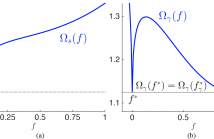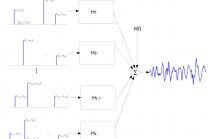
- Read more about Analysis of p-norm Regularized Subproblem Minimization for Sparse Photon-Limited Image Recovery
- Log in to post comments
Critical to accurate reconstruction of sparse signals from low-dimensional low-photon count observations is the solution of nonlinear optimization problems that promote sparse solutions. In this work, we explore recovering high-resolution sparse signals from low-resolution measurements corrupted by Poisson noise using a gradient-based optimization approach with non-convex regularization. In particular, we analyze zero-finding methods for solving the p-norm regularized minimization subproblems arising from a sequential quadratic approach.
ICASSP2016.pdf
- Categories:
 13 Views
13 Views- Read more about FAST AND EFFICIENT REJECTION OF BACKGROUND WAVEFORMS IN INTERICTAL EEG
- Log in to post comments
- Categories:
 5 Views
5 Views- Read more about EPILEPTIFORM SPIKE TEMPLATE SELECTION USING DYNAMIC TIME WARPING AND AFFINITY PROPAGATION
- Log in to post comments
- Categories:
 23 Views
23 Views
- Read more about TRANSIENT MODEL OF EEG USING GINI INDEX-BASED MATCHING PURSUIT
- Log in to post comments
We introduce a novel, transient model for the electroencephalogram (EEG) as the noisy addition of linear filters responding to trains of delta functions. We set the synthesis part as a parameter-tuning problem and obtain synthetic EEG-like data that visually resembles brain activity in the time and frequency domains. For the analysis counterpart, we use sparse approximation to decompose the signal in relevant events via Matching Pursuit.
- Categories:
 9 Views
9 Views- Read more about EPILEPTIFORM SPIKE DETECTION VIA CONVOLUTIONAL NEURAL NETWORKS
- Log in to post comments
- Categories:
 9 Views
9 Views- Read more about Brain Functional Connectivity Analysis Using Mutual Information
- Log in to post comments
- Categories:
 1 Views
1 Views- Read more about Brain Functional Connectivity Analysis Using Mutual Information
- Log in to post comments
- Categories:
 2 Views
2 Views- Read more about Motor Imagery Classification Using Multiresolution Analysis and Sparse Representation of EEG Signals
- Log in to post comments
- Categories:
 9 Views
9 Views- Read more about Subject Independent Affective States Classification Using EEG Signals
- Log in to post comments
Affective states classification has become an important part of the Human-Computer Interface (HCI) study. In recent years, studies of physiological signals, such as ECG, GSR and EEG on affective expression have shown very promising results. In this study, we carried out two experiments to better understand the neurological expression of emotions through the use of EEG signals. In particular, we carried out a subject- independent affective states classification study using narrow- band spectral power of the EEG signals.
- Categories:
 16 Views
16 Views